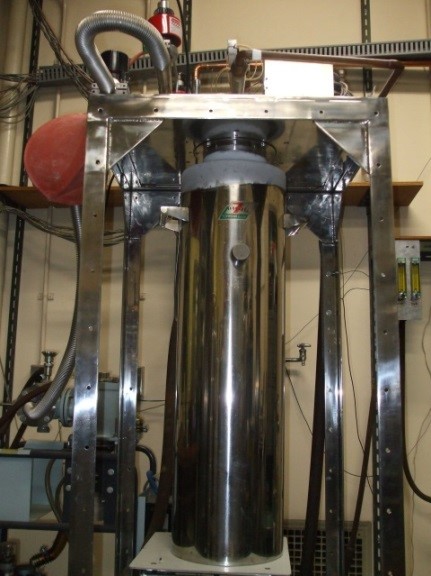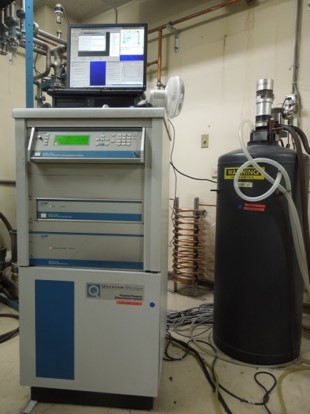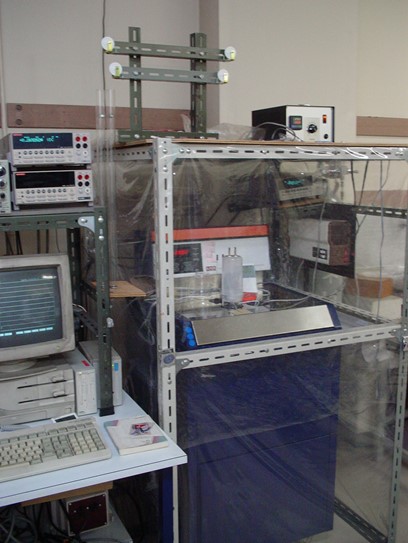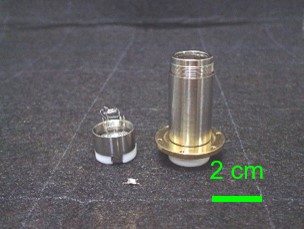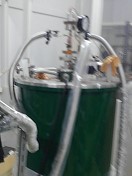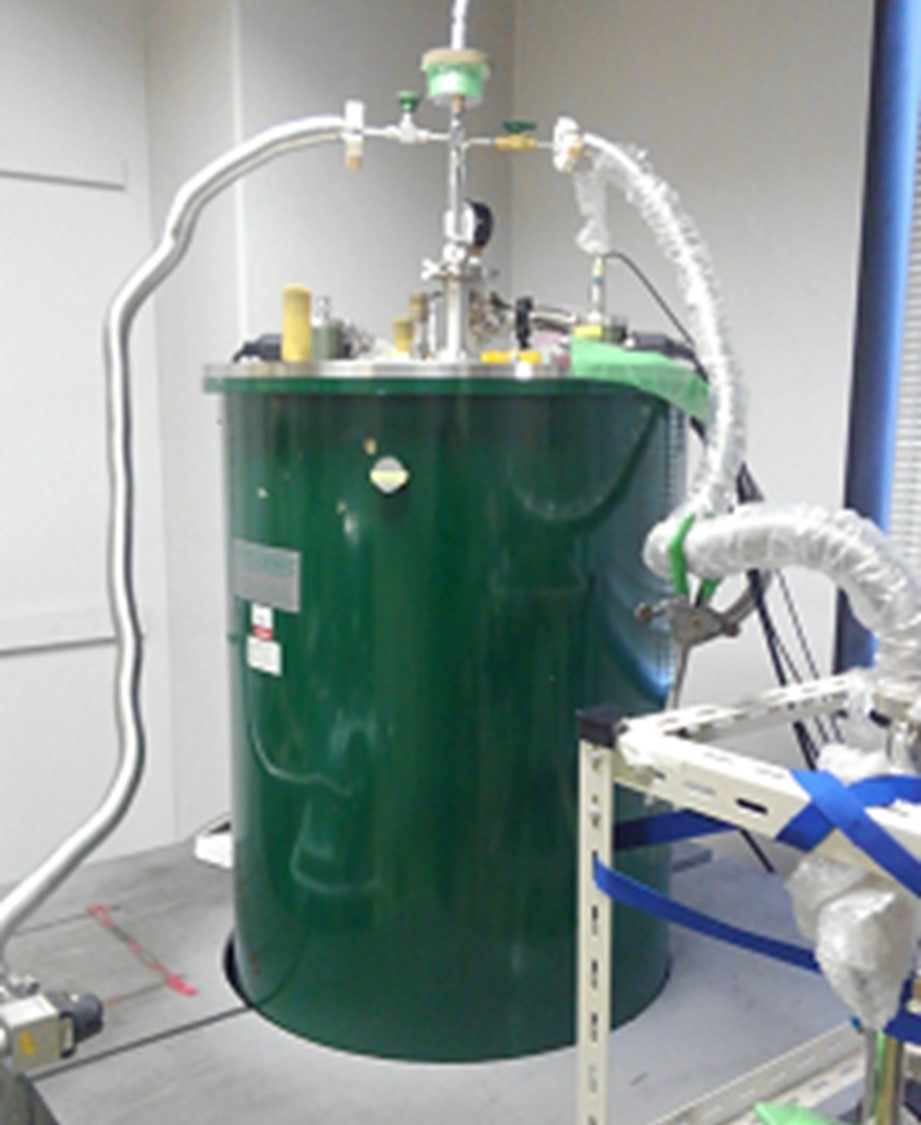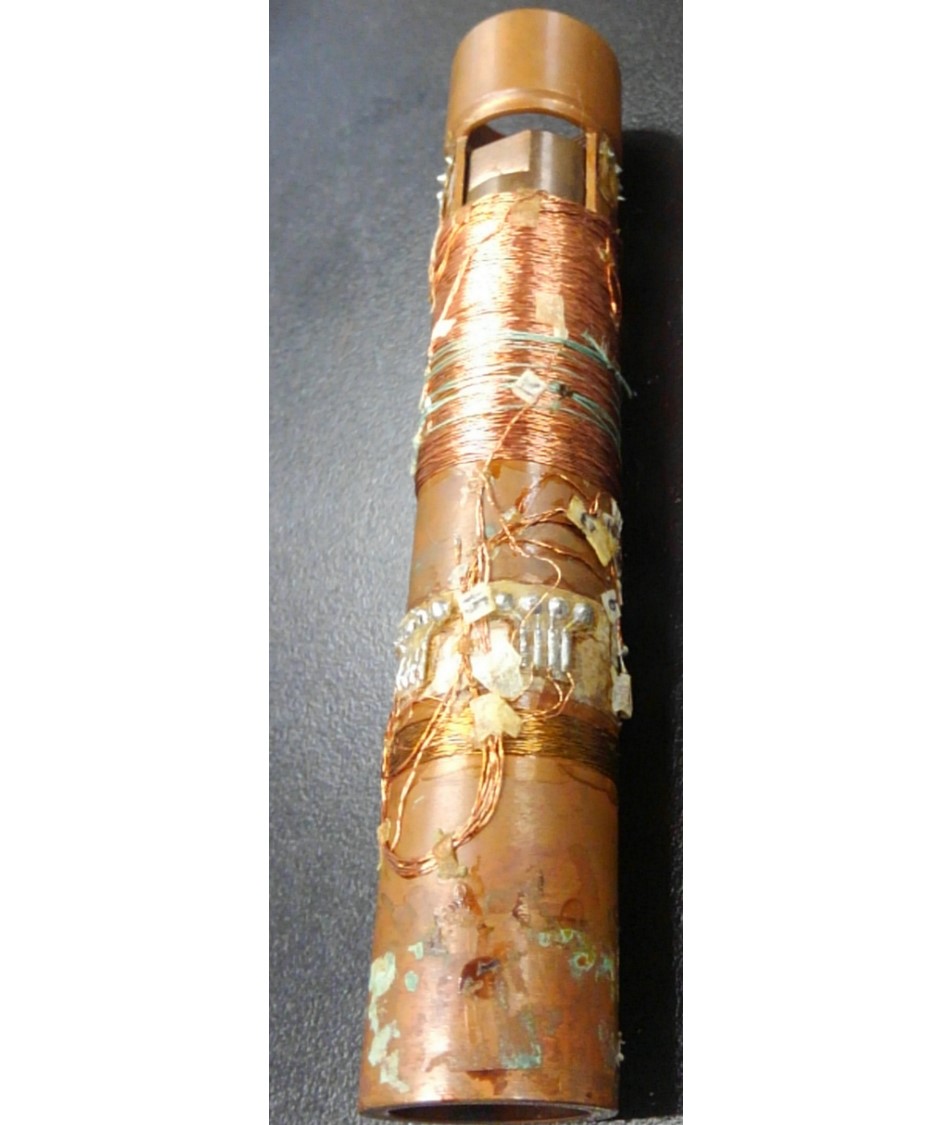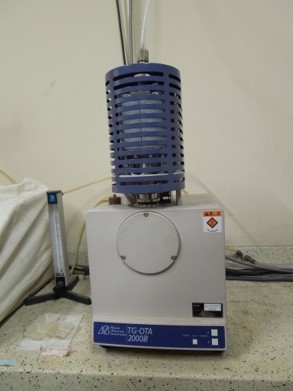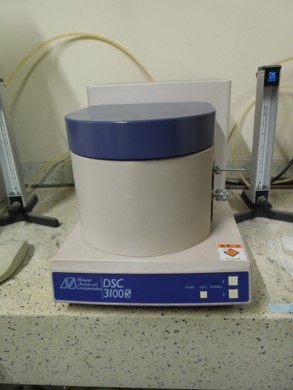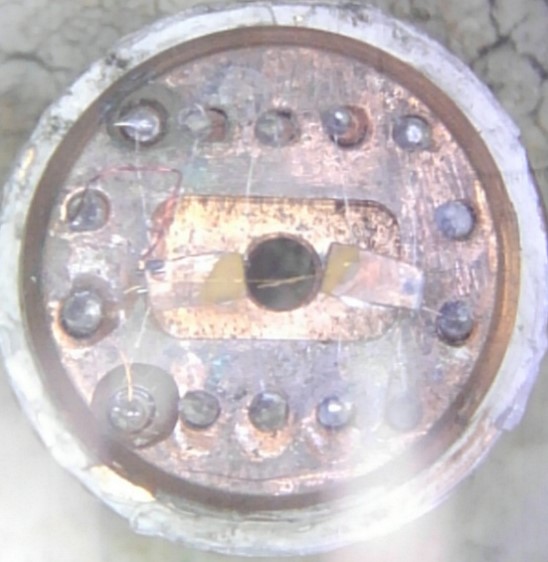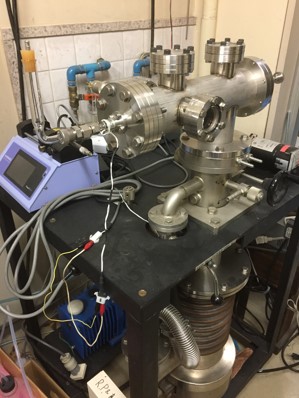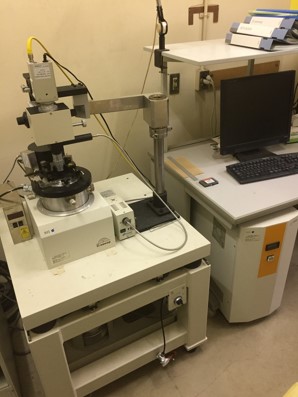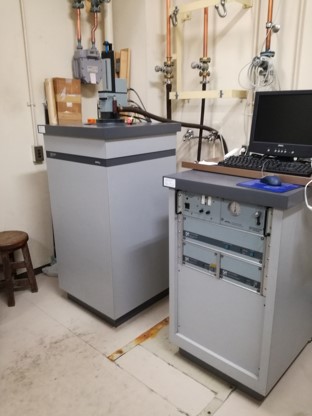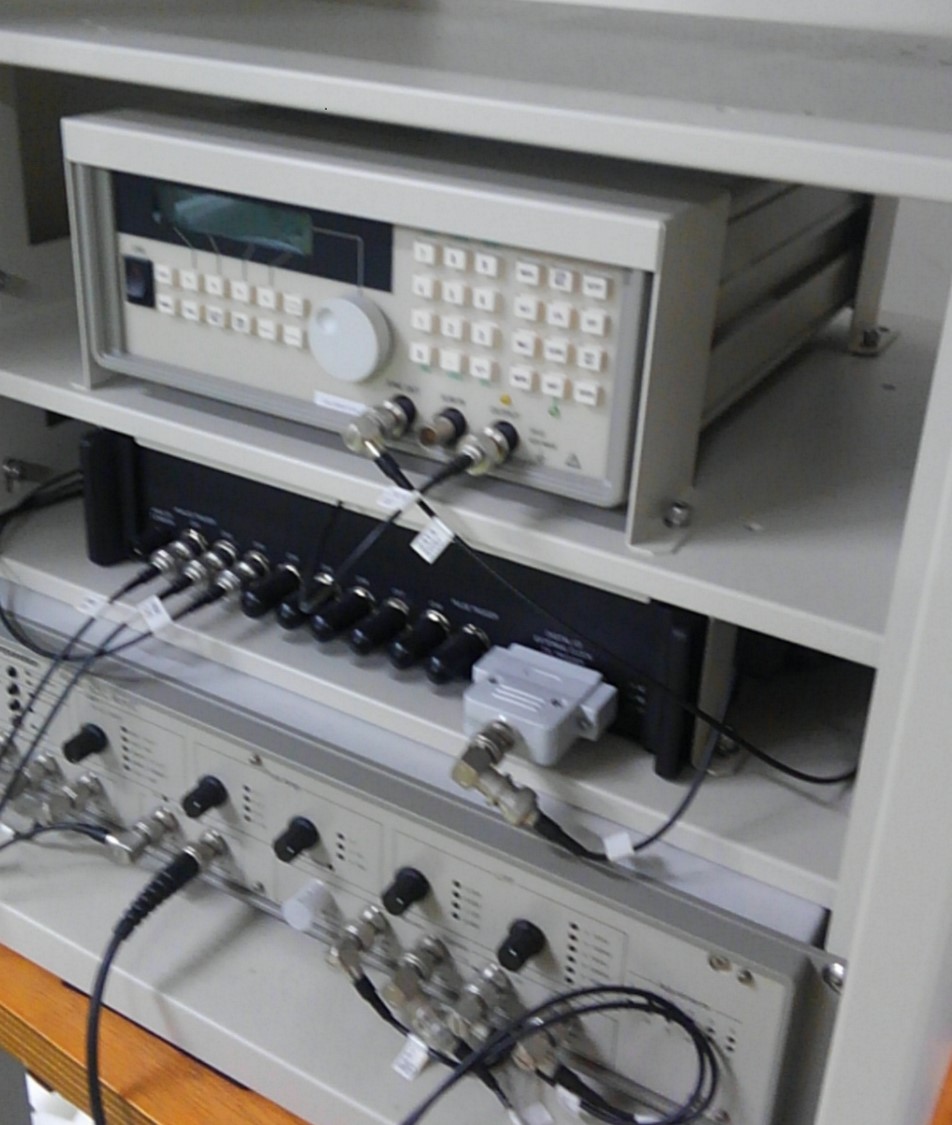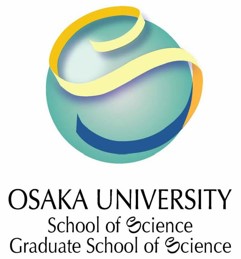Instruments
Use of instruments (collaborative research)
Details of Instruments
| No. 1 | Adiabatic calorimeter | Self-made | |
|---|---|---|---|
|
[Overview] This apparatus enables us to measure the accurate heat capacities of samples in the temperature range of 5-400 K. Since it adopts adiabatic calorimetry, it is available to the detection of first-order phase transition and glass transition. |
||
|
[Specification] |
[Remarks] | ||
| [Staff] Yuji MIYAZAKI | |||
|
[Research] |
|||
| No. 2 | Relaxation calorimeter | PPMS (Quantum Design) | |
|---|---|---|---|
|
[Overview] This apparatus enables us to measure the heat capacities of small amounts of samples in the temperature range of 0.4-400 K under magnetic field. Since it adopts relaxation calorimetry, it is unsuitable for the detection of first-order phase transition. |
||
|
[Specification] |
[Remarks] | ||
| [Staff] Yuji MIYAZAKI | |||
|
[Research] |
|||
| No. 3 | High-precision isothermal calorimeter for living organisms | improved LKB2277-201 | |
|---|---|---|---|
|
[Overview] Precisely and non-invasively measures small thermal activities of living organisms, continuously for a long period beyond a week under stable background less than 10 nW. Suitable for measuring thermal activities of cell proliferation, early development of animals and plants under various conditions. |
||
|
[Specification] |
[Remarks] | ||
| [Staff] Yatsuhisa NAGANO | |||
|
[Research] |
|||
| No. 4 | High-precision micro-combustion calorimeter | Self-made | |
|---|---|---|---|
|
[Overview] Precisely measures heats of combustion of materials, which are composed of C, H, O, N(Au, Pt, I)elements by burning small amount of sample, typically 3 mg. It is necessary to confirm complete combustion to get reliable thermodynamic quantities and recommended to repeat experiments for 6 times to evaluate sdm. |
||
|
[Specification] |
[Remarks] | ||
| [Staff] Yatsuhisa NAGANO | |||
|
[Research] |
|||
| No. 5 | Relaxation calorimeter for low temperature measurements | Self-made | |
|---|---|---|---|
|
[Overview] This system can measure a temperature dependence of heat capacity by a relaxation method with temperature range of 0.6-10 K under magnetic fields up to 15T. |
||
|
[Specification] |
[Remarks] | ||
| [Staff] Satoshi YAMASHITA | |||
|
[Research] |
|||
| No. 6 | Angle-resolved relaxation calorimeter | Self-made | |
|---|---|---|---|
|
[Overview] This system is composed of a relaxation calorimeter, a 7 T superconducting split-magnet and a Hall effect devices. This system is suitable for the angle-resolved heat capacity measurement. |
||
|
[Specification] |
[Remarks] | ||
| [Staff] Satoshi YAMASHITA | |||
|
[Research] |
|||
| No. 7 | High-pressure ac calorimeter | 自作 | |
|---|---|---|---|
|
[Overview] This calorimeter can measure heat capacity under pressure up to 2 GPa with temperature range between 2 K to 10 K with low temperature set up and 20 K to 200 K with high temperature set up by AC method. This system also can be attached with 15 T superconducting magnet. |
||
|
[Specification] |
[Remarks] | ||
| [Staff] Satoshi YAMASHITA | |||
|
[Research] |
|||
| No. 8 | Thermal gravimetric-differential thermal alyzer (TG-DTA) | TG-DTA 2000S (Netzsch) | |
|---|---|---|---|
|
[Overview] This equipment enables us to perform thermogravimetry and differential thermal analysis of samples simultaneously. It is suitable for the study of thermal decomposition reaction. |
||
|
[Specification] |
[Remarks] | ||
| [Staff] Yuji MIYAZAKI | |||
|
[Research] |
|||
| No. 9 | Differential scanning calorimeter (DSC) | DSC3100 (Netzsch) | |
|---|---|---|---|
|
[Overview] This is a heat-flux type of differential scanning calorimeter. It is available to the detection of first-order phase transition. |
||
|
[Specification] |
[Remarks] | ||
| [Staff] Yuji MIYAZAKI | |||
|
[Research] |
|||
| No. 10 | Thermal conductivity measurement system | Self-made | |
|---|---|---|---|
|
[Overview] This system can measure thermal conductivity for the molecular crystal. The measurement temperature range with low temperature set up is 0.8 K to 10 K and up to 100 K with high temperature set up. Typical crystal length for measurement is around 1 mm. This system can be used in a superconducting magnet. |
||
|
[Specification] |
[Remarks] | ||
| [Staff] Satoshi YAMASHITA | |||
|
[Research] |
|||
| No. 11 | Equipment for the pulse injection | Self-made | |
|---|---|---|---|
|
[Overview] This instrument is able to fabricate organic layers to an accuracy of sub-monomolecular layer. The solution of the target molecule is pulse injected onto the substrate as follows. The substrate is set in a chamber held in a vacuum. Next, the solution is introduced into the chamber as the mists of hundreds nm in diameter. |
||
|
[Specification] |
[Remarks] | ||
| [Staff] Daisuke TAKAJO | |||
|
[Research] |
|||
| No. 12 | Scanning tunneling microscope/Atomic force microscope | Esweep (SII NanoTechnology Inc.) | |
|---|---|---|---|
|
[Overview] The scanning probe microscopy (SPM) offers a wide range of application from surface topography to a wide variety of nanoscale surface property measurements operated under high-vacuum conditions. |
||
|
[Specification] |
[Remarks] | ||
| [Staff] Daisuke Takajo | |||
|
[Research] |
|||
| No. 13 | SQUID Magnetometer | MPMS-1S (Quantum Design)) | |
|---|---|---|---|
|
[Overview] Sample magnetization is measured by the unsheathe procedure in the temperature range of 5-400 K under a ceiling dc field of 1.0 T. Ac susceptibility is also available under oscillating field of 0.1 Hz-10 kHz. Usually a polycrystalline sample is put in a gelatin capsule to be mounted, but polycarbonate capsules and quartz tubes are ready for use instead. |
||
|
[Specification] |
[Remarks] | ||
| [Staff] Motohiro Nakano | |||
|
[Research] |
|||
| No. 14 | Ferroelectric capacitor evaluation systemr | FCE (Toyo Corp.) | |
|---|---|---|---|
|
[Overview] This system can measure I-V, Q-V character of solid samples with frequency range of 0.1-1000 Hz and amplitude up to 10 V. For the temperature dependence measurements, another temperature control system will be required. |
||
|
[Specification] |
[Remarks]
high/low temperature and high voltage measurements system can be attached |
||
| [Staff] Satoshi YAMASHITA | |||
|
[Research] |
|||
